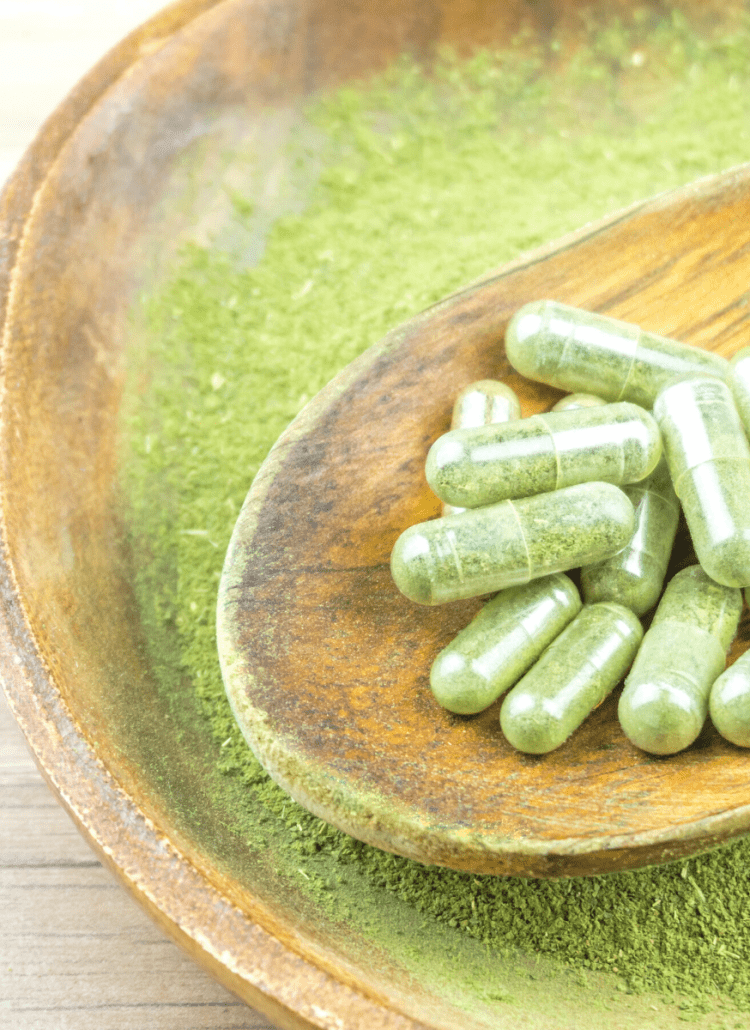
If you’ve followed the FDA’s stance on kratom, you’ve probably noticed their favorite buzz phrase lately: “synthetically boosted potency.” It’s the label slapped on 7-hydroxymitragynine (7-OH) products — even though 7-OH occurs naturally in kratom leaves and inside the human body after you drink a cup of kratom tea. Meanwhile, over in the cannabis world, single-molecule products like cannabinol (CBN) glide by without anyone at the FDA calling them “boosted” or “chemically juiced.”
So why the double standard? Let’s dig into the science, the spin, and the politics behind this language — and why it matters for the future of plant medicine.
The Science
What 7-OH actually is
7-hydroxymitragynine is one of the alkaloids naturally present in kratom leaves, usually at trace levels. Your body also produces it after consuming mitragynine, kratom’s most abundant alkaloid.
7-OH binds to mu opioid receptors, but here’s the nuance you won’t hear in a press release: it’s a G-protein-biased partial mu opioid agonist, meaning it doesn’t fully activate the receptor the way fentanyl or heroin does. This partial activity is one reason 7-OH has a ceiling effect for respiratory depression, a major factor in opioid overdose deaths. It’s also why no lethal dose was found in mouse studies when 7-OH was given orally (Smith, 2018).
What CBN actually is
Cannabinol (CBN) is a cannabinoid found naturally in small amounts in aged cannabis. In modern manufacturing, it’s often made synthetically from THC via oxidation in a lab, especially when derived from hemp, which has much less THC as source material to work with than cannabis.
CBN is mildly psychoactive and sold openly in tinctures, gummies, and vape cartridges, with purported benefits including insomnia support and pain relief. Like 7-OH, it’s a single-molecule isolate that can be natural or lab-derived.
CBN products can cause drowsiness, dizziness, and confusion, but the drug’s benefits outweigh these side effects. For example, the lethal dose of CBN in mice is 13,500 milligrams per kilogram. It is far less than the LD50 for nicotine, which is three milligrams per kilogram.
The similarities
Both 7-OH and CBN are plant-derived molecules that can be isolated, concentrated, or synthesized. Both can be made in a lab from a precursor compound. Both are sold in single-ingredient products. Chemically speaking, they’re in the same “purified plant compound” category — but you wouldn’t know it from the rhetoric.
The Spin
How the FDA/AKA talk about 7-OH
Words like “synthetically boosted potency” and “chemically manipulated” show up again and again. The framing suggests something dangerous and illicit, evoking images of spice/K2 or fentanyl analogs. By leaning on these scare terms, regulators can make 7-OH sound like a designer drug instead of a naturally occurring alkaloid.
How cannabinoids like CBN are described
For cannabinoids, the language is neutral: “isolate,” “distillate,” “natural extract.” These terms sound clinical, safe, and legitimate. Potency is discussed in terms of consumer choice, not public health danger.
Why the language matters
“Synthetically boosted” primes policymakers — and the public — to think “danger” and “ban.” “Isolate” sounds like an accepted product category. These words are not just descriptors; they’re political tools.
The Politics
Kratom vs. cannabis lobbying power
Cannabis has multi-billion-dollar legal markets, strong industry associations, and bipartisan support. Kratom, while widely used, has fewer organized resources and is under constant federal scrutiny.
Regulatory history
The FDA has been trying to restrict kratom alkaloids for years, including previous attempts to place mitragynine and 7-OH in Schedule I. Cannabis isolates, even when synthetically produced, generally remain regulated at the state level without Schedule I pressure.
Media amplification
Mainstream coverage of 7-OH repeats FDA language uncritically, spreading stigma. Cannabis products, by contrast, often get health and wellness framing in lifestyle media.

Why This Matters
Language frames risk. When the FDA says “synthetically boosted,” they’re setting the stage for DEA Schedule I scheduling — which could make possession of 7-OH, and even possibly its precursor kratom, a felony. Without specific exemptions for natural/trace levels in kratom or for in vivo metabolism, scheduling 7-OH could effectively criminalize kratom users overnight.
The same chemical facts applied to CBN would trigger none of this rhetoric — which tells you this isn’t just about science. It’s about selective framing to advance policy goals.
The FDA attacking kratom is nothing new. They did it 2016 and 2021 and dropped it due to public outcry. Now they are trying a new strategy, which is to demonize one of the alkaloids in kratom, 7-OH, despite it also being a major metabolite of the mitragynine in kratom. Don’t fall for their tricks.
As the author of Kratom Is Medicine, an addiction neuroscientist, kratom user, and scientific advisor to the 7-HOPE Alliance, I urge you to support medical freedom and evidence-based drug policy.
What Needs to Change
1. Consistency in terminology. If CBN is an “isolate,” then 7-OH is too. If “synthetically boosted” is the standard, it should apply across all plant-derived molecules.
2. Risk-based regulation. Use actual safety and pharmacology data — not fear-based phrasing — to guide policy.
3. Protect research access. Schedule I doesn’t just restrict sales; it shuts down legitimate science.
Take Action
We can’t let selective language drive bad law. If you care about science-based policy and keeping plant medicine accessible, speak up. Share this post, challenge misleading language when you see it, and tell lawmakers you oppose a 7-OH Schedule I ban.
📢 Sign & share the petition to stop a federal 7-OH ban & protect chronic pain patients:
Change.org: Urgent — Stop a National 7-OH Ban
🚫 Visit Save7OH.org to join the fight & send a letter to your representatives:
Use the automated form to send the letters in one click on Save7OH.org
Pin This Post





